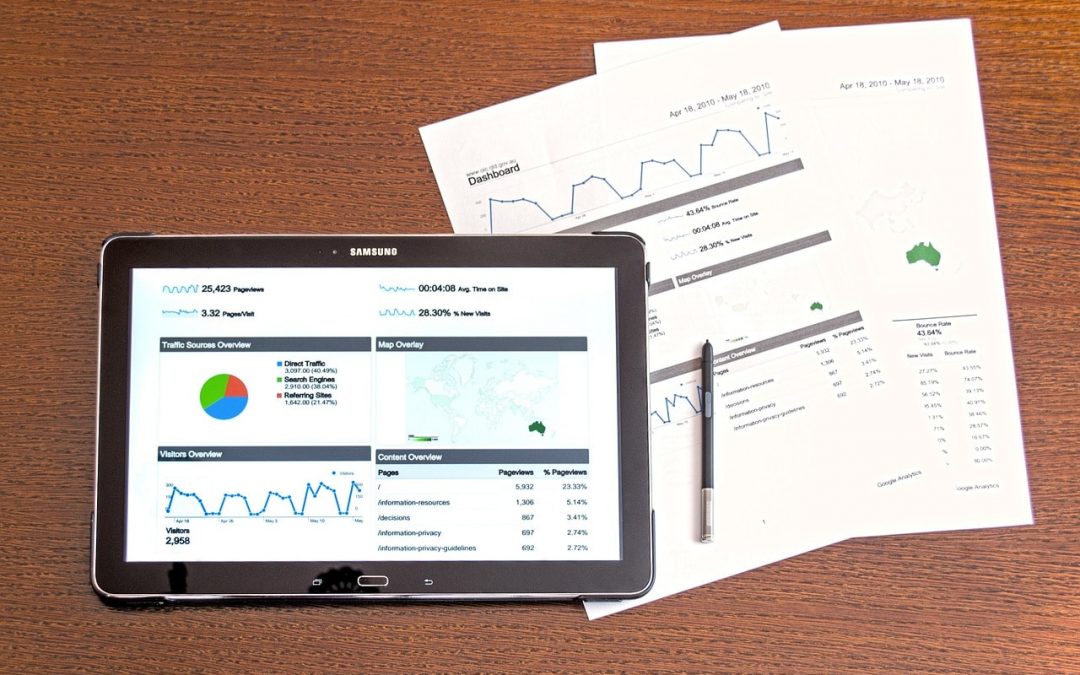
Enterprise software allows restaurant owners and managers to oversee all locations in a single simple interface. You can run reports from all locations or view each location individually. If you have multiple locations, you can easily lose sight of each individual business, only seeing the red flags when it is too late. Reporting gives you actionable insights so you can make each location as profitable as possible. Learn how enterprise software can help your growing restaurant enterprise.
1. Off-Site Management
You can’t be in multiple places at one time; it’s just not possible. Your time is valuable, which is why enterprise software allows you to remotely run reports. You can make one location your main “office” or view these reports from your home or anywhere with wifi. Sometimes you aren’t alerted by management about a problem until it’s too late. Control your point of sale systems from a single interface to set floor plans, products, promotions, and specials.
You can customize and automate your reports to make sure you are regularly checking up on your business. You can run reports at the site or enterprise-level. Find out what is going on by terminal, profit center, site region, and corporate entity. Your reports can be sent directly to your inbox daily, so no matter where you or what you’re doing, you are given the data you need to make sure everything is on track. You can have these reports automatically sent to your other partners, keeping everyone in the loop.
2. Inventory Control
Managing your inventory is extremely important for profits. Our enterprise software uses the first in first out principle (FIFO) to make sure costs are as accurate as possible. You are also provided with detailed ingredient and product information. There are different inventory levels so you can allow external audit supervision. You can also run live product audits to make sure you’re getting accurate numbers for each and every product.
3. Pricing Flexibility
Locations may have different pricing and product offerings. You can control pricing on an individual site level or through all locations with price banding. Make sure your pricing is accurate by setting price control by location, region, company, or create your own custom grouping. When combined with the enterprise promotion wizard, you have complete pricing control over each individual location.
4. Task Management
Use the electric manager’s journal for task management. You are given enterprise-level monitoring that integrates with the POS and mobile devices to make sure each task is being completed. You can be alerted when tasks are completed (or not completed)
5. Employee Management
A big part of your restaurant is its employees. You can create multiple jobs, security levels, and pay rates that integrate with fast and accord record keeping. No matter how many terminals or locations you have, you’ll be provided with accurate employee data. This data gives you extensive scheduling options and can forecast labor costs.
The more locations you have, the harder it can be to keep track of data if you do not have enterprise software integrated with your point of sale system. Enterprise reporting allows you to see data from individual locations or multiple locations so you understand what business is looking like from every angle. You are able to see if there is anything out of the ordinary so you can make sure each location is running properly. You can’t be at every location, every day, but this software is the next best thing. Enterprise software makes sure the numbers never catch you by surprise.
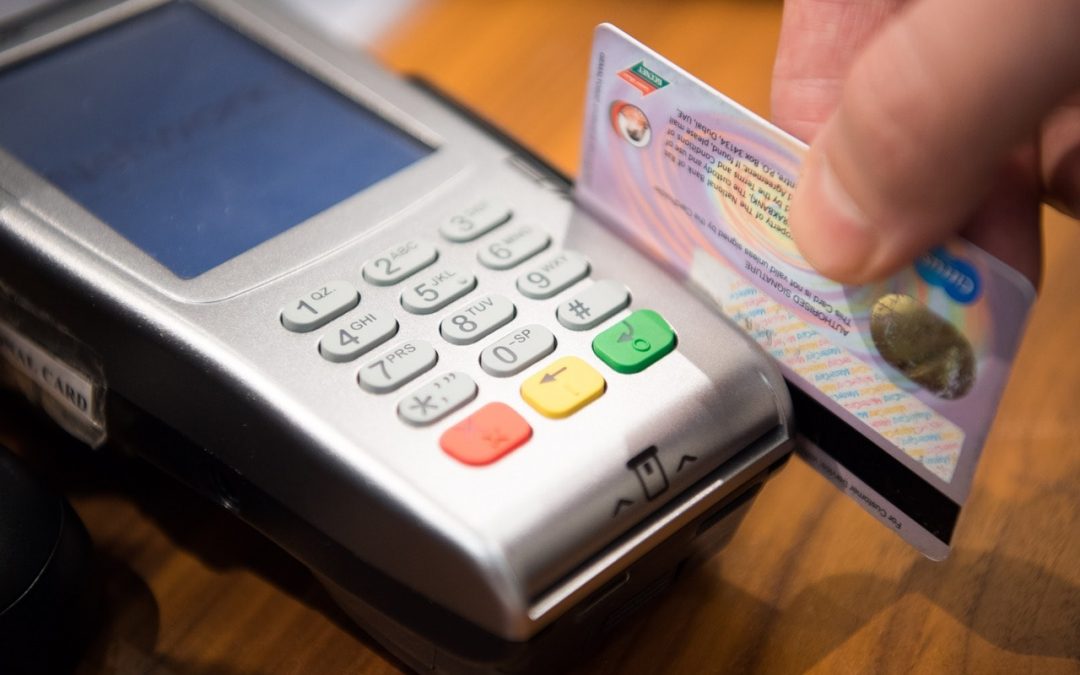
T-Mobile has a great commercial, with the punchline “that’s your standard fee…fee” pointing out the hidden costs associated with changing cell phone plans. Choosing a point of sale from the wrong company can feel like buying a new phone. The advertised price looks great, then when you checkout and get your first bill, suddenly the price has increased dramatically. There is a frustrating amount of fees and you’re now stuck in a contract that is expensive and hard to break.
Customer Deception
If a deal is too good to be true, it usually is. Many point of sale providers advertise and quote prices that seem great at first until you read some of the fine print or hit with unspoken, after-the-fact fees. One of the big tricks they have up their sleeve is credit card processing.
Many point of sale companies require customers to use their credit card processor as a way to make money. They sign exclusive contracts with these companies or are even owned by them. When you’re shopping around for a new point of sale system, the quote you see is not always the real cost after switching over to their credit card processor.
How Point of Sale Intersects with Credit Card Processing
Point of sale systems facilitate transactions, but in order to accept more than just cash, you need to work with a credit card processor. The credit card companies (Visa, MasterCard, American Express, etc.) have an interchange rate or a per transaction charge, for processing their payments. As a business, you can not accept the payments yourself and pay the fee. Credit card processors act as the middleman, and make their money by charging their own fee on top of the fee from the credit card companies.
There are less and less cash-only businesses as card-based payments have become the new standard. Some states even allow businesses to be credit/debit only and not accept cash to speed up the transactions. It is typically in the best interest of most businesses to accept credit cards and pay for a credit card processor.
Losing Your Power
Not all credit card processors are created equal, their fees and rates differ dramatically. If you’re forced into choosing a credit card processor because of your point of sale system, you lose the ability to shop around and find the best rates. The credit card companies that work with these contracted point of sale systems know this and can charge more as a result.
Many of these companies offer point of sale and payment processing all in one, just charging a percentage of each transaction and/or a monthly fee. The more you make, the more they make. Some companies charge almost 4 percent of EACH transaction! If your business is making $25,000 in profits, the point of sale company takes $938 (for a 3.75 percent fee) and you still had to purchase/lease the POS software (which is usually an overpriced tablet without the necessary peripherals).
Your Fee…Fee
There are many different pricing strategies, combining flat monthly fees, per transaction fees, or percentage fees based on sales. If you’re working on a tight bottom line, these extra fees and increase prices can affect your business. Until you hit a certain benchmark, you may not even be aware of the extra fees. The “lower” cost of the point of sale system becomes expensive. Some of these hidden fees are cancellation fees (from your old credit card processor), activation fees, service fees, transaction fees and statement fees. Some processors are also faster than others at delivering your funds, which affects your cash flow.
Contracts
Unless you have a background in law, these contracts are very hard to understand. Many credit card processors create complex pricing models and make it very difficult to find out how much you’ll actually be paying. The initial quote may look great on paper, but you’ll notice a difference in your sales versus your funds
These credit card processors also have strict cancellation fees are incentivized to automatically renew contracts without notice. You receive no phone call, email, or other notification of the upcoming renewal date. If you swipe a credit card on or after this date, you’ve just renewed your contract and will suffer penalties for breaking. You become stuck in a cycle with a credit card processor that is hurting your bottom line but is too expensive to cancel AND it’s tied with your point of sale system, which you need to do business.
The Zonal Difference
Zonal works with any credit card processor. We don’t care who you use, if you’re happy, we’re happy. If you like your credit card processor, why should you have to pay to break a contract and start a new one? We don’t aim to make money by signing a contract with a processor and forcing customers to switch over. You should be able to choose your own processor so you can negotiate the lowest rates possible and maximize your profits. We want you to succeed and expand (hopefully enough to open more locations) and staying a part of the Zonal family, that’s how we make our money. We value honesty and transparency; we are partners, not just a provider.
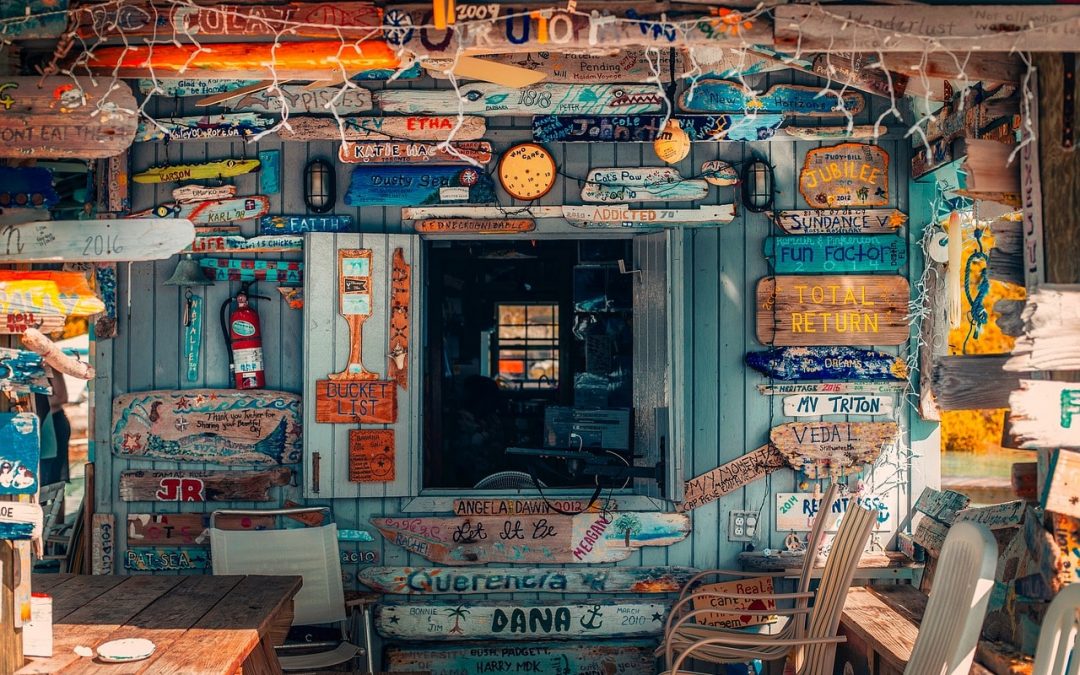
Restaurants open and close for many reasons. A restaurant can be opened by a businessman or women that can’t boil an egg, but be incredibly successful. A restaurant can also be opened by the greatest chef in the world and fail. Your restaurant is more than a business, it’s more than the food: it’s a brand. Customers come for the food AND the experience. Whether it’s a single location or a huge enterprise, a successful restaurant has branding.
What is Restaurant Branding?
Restaurant branding is your unique angle to your customers. Why should they choose you over a competitor? Your branding helps them know what to expect. Each decision made becomes a puzzle piece, with the finished puzzle creating the brand. The branding becomes the menu design, the lighting used, the server’s outfits, the drinks, the tables, the chairs, the social media feeds,and the music played. All of these pieces create the brand.
How to Build a Brand
In order to create a restaurant brand, you have to think about what makes your restaurant, cafe, bar, bakery, etc. unique. Look at it from the customer’s perspective. Branding starts long before the door is opened. Think about the messaging your customers are seeing when they drive by, the signage, the advertisements, the social media posts. These are their first impressions of who you are as a brand.
Today people expect a lot out of a business, particularly restaurants. Customers are looking for emotional attachment, they want to feel a connection towards your business, understanding its personality and using it as a reflection of who they are.
Know Who You Are
Imagine your restaurant is a person and ask yourself these questions:
- What do they look like?
- How do they walk and how do they talk?
- What are their interests?
- Who are they as a person?
- How do they walk?
- What are their favorite foods?
- What do they do in their spare time?
Each decision you make should reflect this personality, as it will attract your ideal audience. When you add specials, decor, or even employees that clash with your brand, you’re hurting your business.
Know Your Angle
Successful restaurants have a “sell.” They have their angles and know who they are. Customers know what to expect and have certain standards towards the particular restaurant. The restaurant fulfills a specific need in the marketplace. The restaurant could be similar to a competitor but has some distinct difference. There is a reason someone would choose one over the other.
If you go to buy a bottled water, you may be overwhelmed by the choices you have. Each product is actually very similar, but the branding is very different. When you choose Fiji over Dasani, you’re choosing water over water. It’s the same product, but the brand is very different. You’re buying the brand.
Restaurant Example
A “local” restaurant that focuses on using locally sourced ingredients is going to want to focus on their angle: local. It’s not just about the food, this “local” theme should spread to every aspect of the restaurant to create a strong brand message. You can use the theme to help every piece of the puzzle be “on brand.” If a piece clashes, it chips away at the authenticity. It goes down to the bathroom decor, the straws, the napkins, the menus, coupons, specials, each of these aspects flows around local sourcing. Each piece doesn’t have to actually be locally sourced, just complementing the theme.
What Can You Do?
Tell a Story
Does your restaurant have a unique backstory? Tell your customers! It will help them gain a better sense of who you are. Let them know if you use your grandmother’s recipe or if a dish was nspired by a trip to Japan in college. Your story helps personify your restaurant, creating its own image and entity. Your restaurant is more than the food and infrastructure, it’s a feeling and an experience.
Attract the Foodies
What makes your food special? Is it the spices, the sourcing, the quality? How did you come up with a recipe? Your food and drinks are the core product of your restaurant, it’s important that the brand fits.
You want to offer a simple pasta with a plain red tomato sauce.You can put it on the menu as:
- Spaghetti
- Pasta al Pomodoro
- Spaghetti Monster
- Pastabilities
- Nonna Rosa’s Pasta
Each one of these names tells a different story and offers different branding. The dishes are all the same, but the branding behind them is different. The pasta will have a different feel depending on presentation to the customer. Does it come out in fancy china, an art deco square bowl, something mismatched, or sustainable bamboo? Even the smallest choices are part of your brand image and can help or hurt it.
Create the Atmosphere
Pretend you’re a customer walking through the doors. What do you see? Observe the music, the sounds of the employees, and the smells of the kitchen. Listen to the music, be mindful of how it would make you feel. A nicely dressed host can bring you to a neatly decorated table, or maybe you seat yourself at a reclaimed wood communal table and grab a paper DIY menu to circle what you want to order.
An enterprise restaurant has the opportunity to choose localization or standardization. Each location can be unique, offering different menu items and decor, or no matter what location you go to, it is exactly the same. Both angles have their own advantages and disadvantages.
Brand Awareness
Social Media & SWAG & Events
Spread the word about your restaurant, bar, cafe, bakery, but make sure all of your messages are on-brand. You social media posts should reflect your brand, using the same tone as your restaurant would if it were a person. Know your audience and post to them.
Hats, t-shirts, koozies, magnets, stickers, etc. are great ways to help spread the word. If you have a great logo, paint the town with it. SWAG is great for building relationships with customers, giving them a reason to think about you.
Your restaurant is a business and it is a brand. The food and customer experience work together to give your customers a view of who your restaurant is. Make sure your customers know what to expect each visit, know what you are offering. Your brand is what sets you apart from your competition. Do you have the best burger in town? Do you brew your own beer? All of your decisions work to build this image which will attract and build a relationship with your customers.

The list of cities that are banning plastic straws is growing, and many restaurants, bars, and cafes are going straw-free voluntarily. Why straw free? How to make your restaurant straw-free? What’s wrong with straws? Here’s everything you need to know about the latest eco-trend and figure out whether or not your restaurant should jump on board.
Single-use plastics are a big part of the hospitality industry, particularly in food service. Customers are automatically given straws with their beverages and leftovers and to-go meals are typically served in plastic or styrofoam. Straws, Styrofoam, other plastics end up as pollution, often in the ocean.
Why straw-free?
Some people need straws for medical reasons and it’s easier for children, but most people use straws out of habit. Americans use an estimated 500 million drinking straws every day! Straws are small and light, easily blown away by the wind. Most recycling facilities do not accept straws, so they either end up as pollution or landfill. Biodegradable straws aren’t much better, just a more expensive option.
When straws and other plastics find their way into the ocean, they end up as pollution. They take years and years to break down (450 years for each plastic bottle), instead finding their way into the stomachs of marine animals and fish. As they do breakdown, they become micro plastics, which are small and easily ingested by fish. The fish can not break them down, so it stays in their system. When we eat these fish, we are consuming micro-plastic.
Going straw-free may seem like a small step in the grand scheme of things, but the small steps can lead to bigger ones. You can start by just asking customers if they would like a straw before handing it out. The National Park Service found that 50 to 80 percent of people will say to a straw if you ask! You can save money while cutting back on plastic use it’s a win-win.
Straw Alternatives
If your customers do demand a straw (which is less than 50 percent) you can offer them a paper one or get creative. By only giving straws to customers that ask for one, it offsets the higher cost of paper straws. The straws don’t have to be paper. There are metal reusable straws, bamboo, and even edible straws made out of Twizzlers or cookies (great for speciality drinks and milkshakes). Even large corporations like McDonalds are making the switch. McDonald’s will start replacing plastic straws with paper ones in the U.K, which is currently 1300 locations.
Be Part of the Change (or Not)
You can use this as a new business strategy to shift towards more sustainable practices. If you’re a farm-to-table restaurant it makes sense to try to be as environmentally friendly as possible. Being eco-minded can appeal to customers, particularly a younger demographic. You don’t have to broadcast your changes, if it doesn’t flow with your customer mindset. You can start slowly phases out straws and even single use plastics without your customers even noticing.
Could Your City Be Next?
Many cities, and even some countries, are taking a stance against single-use plastics. Straws are an easy place to start and help customers and businesses become less dependent on plastic. You can get ahead of the game if you see that your city is trending towards sustainability.
- California: Malibu, Davis, San Luis Obispo
- Florida: Miami Beach, Fort Myers
- Washington: Seattle
The European Union is looking to ban straws and other single-use plastics across its 27 countries by 2030. Countries like France, the UK, and Canada are also reducing their use of single-use plastic usage.
What about Styrofoam?
Styrofoam is often used for delivery and to-go orders. It is a single-used plastic that isn’t currently recyclable. It also breaks down into smaller pieces, which are often ingested by animals and sea-life. It’s becoming banned in more and more cities due to it’s affect on the environment.
- New York: New York City, other cities
- Maryland: Takoma Park
- Washington: Seattle
- Florida: Miami Beach
- Maine: Portland, Freeport
- Massachusetts: Nantucket
- Minnesota: Minneapolis
- Oregon: Portland, other cities
- California: Los Angeles, San Francisco
What Can You Do Today
- Ask customers if they would like a straw, or start serving drinks without them and wait for customers to ask for one.
- As you start to make a dent on your straw supplies, look for alternatives like paper or bamboo straws.
- Consider phasing out your Styrofoam and plastic to-go containers and look for a sustainable alliterative like paper.
- Give customers paper bags to carry their meals in, instead of a single-use plastic one.
- Ask customers if they would like utensils in their takeout or delivery meal, if they’re going to eat at home they probably don’t need it!
- Give customers discounts if they bring their own cups for coffee or a smoothie
Your city may be the next to crack down on straws, you can be a head of the game! The small steps you take can help reduce your restaurant’s plastic use. You may even find you save money in the long-run by making these little changes. You can show customers your business cares about sustainability, and make it part of your branding and appeal to a younger demographic. If sustainability isn’t a part of your marketing or image, you can slowly make these changes so the customers become use to your new changes. Little steps towards sustainability may seem small, but they can help reduce plastic use.
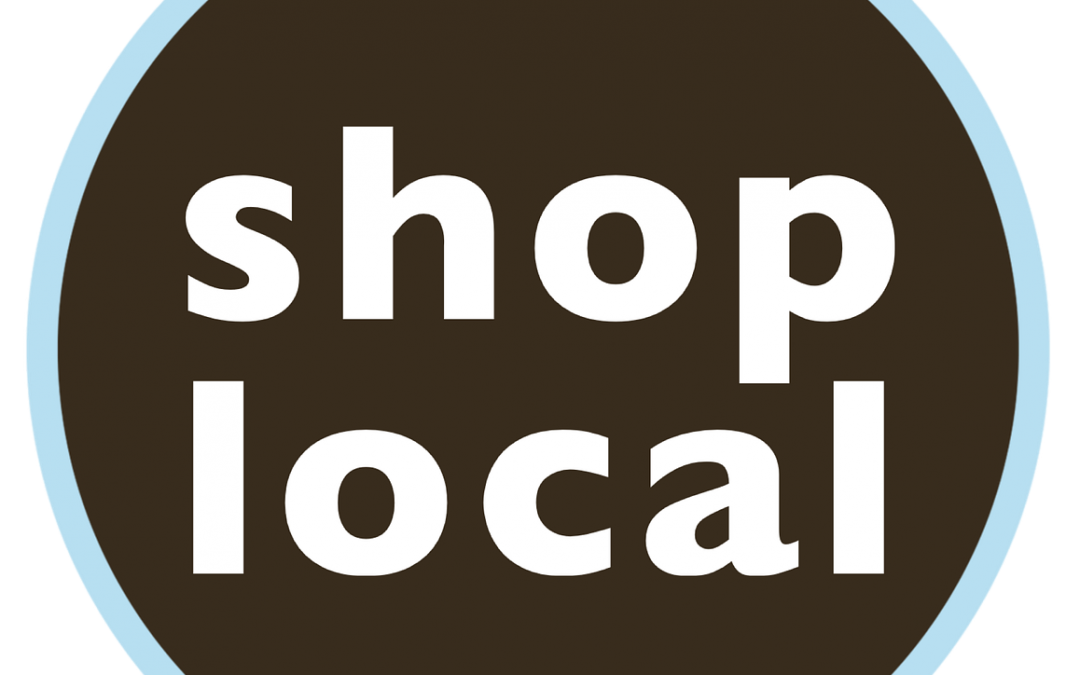
The terms “Shop Local” and “Small Business Saturday” have gained popularity as people acknowledge the benefits of choosing their independent, locally owned shop instead of a large nationally-business Supporting small businesses helps stimulate your local economy. The money you spend is often being put back into your community. Locally owned shops and restaurants make your city and town unique, chains can be anywhere, but many independent businesses are one of a kind. Choosing a local coffee shop or bakery over Starbucks and Dunkin’ Donuts helps gives business to a small business owner, helping them stay in business and not run out of business by a large corporation or chain.
Why Restaurants Choose Local Businesses
Fresher Foods
Fresh foods taste better. Restaurants can choose to get their meats, seafood, cheeses, and produce from local farmers and suppliers rather than purchase from nationally owned suppliers that have to ship the goods over thousands of miles. It may not be possible for every ingredient and requires seasonal menu offerings, but the taste and local support cannot be beaten. Meals in the US take around 1,500 miles to get from the farm to the customer’s table (https://cuesa.org/learn/how-far-does-your-food-travel-get-your-plate).
Premium price
Customers are willing to pay a premium price for locally sourced and sustainable goods (https://lib.dr.iastate.edu/cgi/viewcontent.cgi?article=2347&context=etd). Foods labeled as organic and local are seen as tasting better by consumers (https://www.theguardian.com/lifeandstyle/wordofmouth/2014/apr/22/local-seasonal-produce-taste-better). Local produce can travel at peak ripeness, as they are traveling shorter distances. Local farms and butchers may charge higher prices, but customers are willing to pay more too. Local farms are more likely to offer organic produce, meats, and cheeses, which customers enjoy.
Marketing
Restaurants can use local sourcing as a marketing tool. Customers enjoy businesses that support other local businesses. Farm-to-Table is a newly coined term for restaurants that use local farmers and butchers to supply their ingredients. Local food can feel more authentic and give customers a unique experience, especially to out-of-towners.
Eco-Friendly
Customers are able to get altruistic fulfillment through choosing a menu item or restaurant that supports local businesses; they feel like their dining choice has rippling positive benefits. Current food trends lean towards health and sustainability. Organic menu offerings are seen as healthier and more environmentally friendly. The National Restaurant associate found that 34 percent of customers felt organic or environmentally friendly food was an important factor for restaurants (http://www.restaurant.org/Manage-My-Restaurant/Food-Nutrition/Trends/6-strategies-to-integrate-locally-sourced-food).
New Meal Ideas
Local foods are often seasonal, which can lead to new ideas for specials or menu items. Starbucks created a new trend with their Pumpkin Spice offerings that are only available in fall, which is pumpkin season. Seasonal menus can drive sales for certain customer favorites that they know will only be available for a limited amount of time. Seasonal menus also present a marketing opportunity to push new items and specials based on special seasonal ingredients.
Support Other Small Businesses and Build Relationships
You may be surprised to find better deals and discounts when doing business with other small businesses. Free food, leads, and positive word-of-mouth goes a long way with local business. Needing a new website? Try using a local graphic designer and web builder. They may be willing to lower their price if they can advertise on your website and if you spread the word to other restaurant and businesses that could use their services. Instead of choosing a large corporate point of sale company, customer loyalty, online ordering, or digital signage, use a local business. Local businesses can usually offer better prices, customer service, and reliability. When you need customer or tech support, you can connect with a real, local employee (who probably knows you by name) and be given top priority.
You are never just a “number” to a local business, you are part of the family. They value your business and will to go the extra mile to make sure you are happy. Large national companies are not able to give customers the one-on-one attention that small, local businesses can. You can cultivate relationships within your community, giving mutual support, spreading positive word of mouth, and referring leads. Local independent businesses provide an experience and customer service that national businesses often cannot compete with.
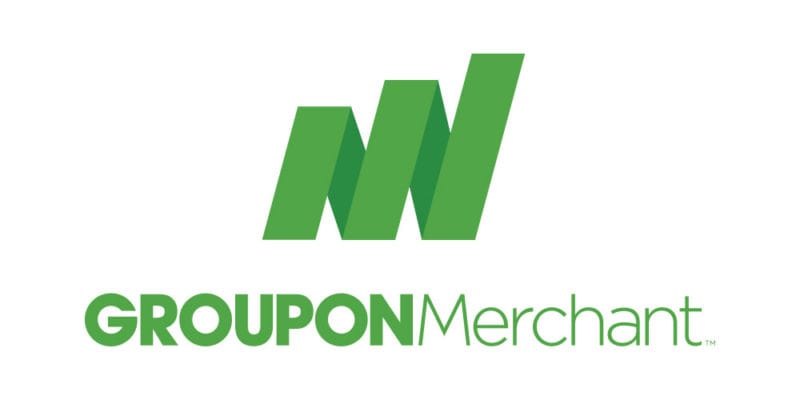
Groupon is a marketing tool that businesses can use to get customers in the door. Groupon is seen as a trusted service, where users can purchase a deal for a particular restaurant, cafe, bowling alley, or any small business. Should you use Groupon to market your new restaurant? What are the pros and cons of Groupon? Is Groupon more effective than Google Adwords or Facebook advertising?
What is Groupon?
Groupon.com is an online marketplace that advertises businesses offering discounts on goods and services. Customers can find “food and drink” deals in their area as well as “things to do.” Groupon connects to potential customers through email marketing as well as their website and mobile app. Most Groupons offer 50 percent off the retail price. What is unique about Groupon is that customers pay upfront. A restaurant could have a deal that offers “$25 for $50 worth of food and drinks.” The customer would pay via Groupon and then receive the gift certificate which they can print out or present the barcode using their mobile phone.
How much does it cost me?
Groupon takes 50 percent of your profit according to FitSmallBusiness. If you’re Groupon was “$30 dollars for $60 dollars worth of food and drink” then you will earn $15 dollars and Groupon will earn $15 every time a customer purchases the deal from the site.
Why use Groupon?
The 50 percent margin may seem steep, but Groupon is a marketing tool, not a sales tool. Business owners in the restaurant industry can use Groupon to get customers in the door. Once you have them at a table, servers can upsell (getting the customers to spend more than the coupon). They may bring friends and if the experience is positive, could become repeat customers or give a good review.
Groupon for Local Marketing
The main sell point of Groupon is the local marketing. The website is designed to show Groupon users deals in their area. Your restaurant will be marketed to people looking for food and drink deals in a specific area. This visibility is great for new restaurants if they are able to handle the very small profit margins.
Pros:
- A chance to upsell and create repeat customers
- Visibility for new restaurants
- Groupon encourages customer reviews
Cons:
- Small profit margins
- Attracts deal-seeking customers
Groupon vs Google Adwords or Facebook Advertising
Groupon can be an easier platform for business owners who do not have marketing experience. Google Adwords and Facebook advertising can be difficult and overwhelming for those who have never advertised on these platforms before.
Groupon also has no upfront costs. Groupon’s profits are only sales-based. Google Adwords and Facebook advertising are pay-per-click advertising services that require a budget upfront and need to be set-up and monitored by the business owner. Groupon handles all of the advertising aspects.
Google Adwords and social media advertising can be better for existing restaurants looking to raise brand awareness, especially for an event, if the business owner has a marketing coordinator on staff or knows how to use these services.
Groupon is a great way for new restaurants, cafes, bars, bowling alleys, and other small businesses to reach local customers without a large upfront cost. There is no marketing knowledge or experience needed, Groupon handles all of the advertising. Groupon takes 50 percent of the profits from each deal and should be used for marketing not sales. Groupon helps get customers in the door, where servers can upsell and create repeat customers.






